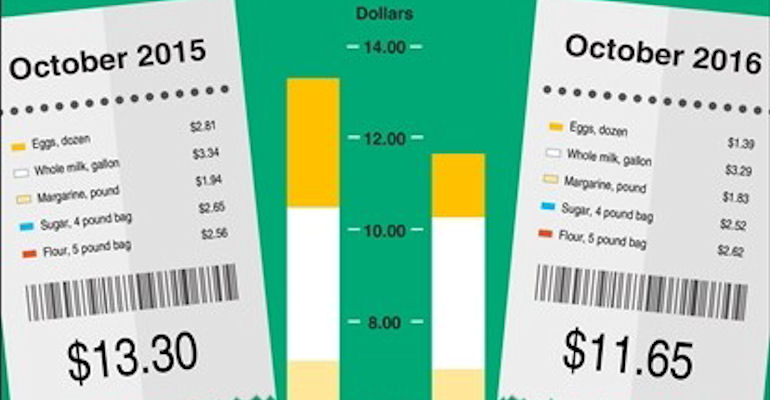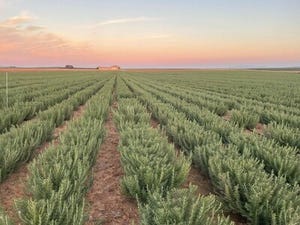Baking ingredient costs lower in 2016
Total cost of five baking staples — eggs, milk, margarine, sugar and flour — lower in 2016 versus 2015.

This holiday season, consumers buying baking ingredients will find a bit more left in their wallets. The total cost in 2016 for five baking staples — eggs, milk, margarine, sugar and flour — was down from 2015, according to the latest "Food Price Outlook" data released by the U.S. Department of Agriculture's Economic Research Service (ERS).
A 5 lb. bag of flour, 4 lb. bag of sugar, gallon of whole milk, pound of margarine and carton of eggs would have cost $13.30 in October 2015 but cost just $11.65 in October 2016 — a savings of $1.65.
Consumers may notice the biggest savings when they visit the refrigerated cooler for eggs. Egg prices have been halved, declining by $1.42/doz. year over year as the egg industry recovers from last year’s outbreak of highly pathogenic avian influenza.
Price changes for the other categories are smaller and vary depending on the ingredient. Milk, sugar and margarine cost less this year, while a 5 lb. bag of flour cost 6 cents more than last year.
In 2016, ERS predicts prices for food consumed at home (supermarket prices) to decrease between 1.25 and 0.25%, marking the first year since 1967 that retail food prices could reflect annual deflation. The forecast has been lowered due to recent declines in prices for beef and veal, poultry and eggs. Lower transportation costs due to deflated oil prices and the strength of the U.S. dollar have placed additional downward pressure on food prices in the first half of 2016.
Looking ahead to 2017, supermarket prices are expected to rise 0.5-1.5%. Despite the expectation for declining prices in 2016, poultry, fish/seafood and dairy prices are expected to rise in 2017. These forecasts are based on an assumption of normal weather conditions throughout the remainder of the year; however, severe weather or other unforeseen events could potentially drive up food prices beyond the current forecasts.
ERS forecasts egg prices at the retail level to decline 21-22% in 2016 and to decrease an additional 11-12% in 2017. ERS predicts retail dairy product prices to decrease 1.5-2.5% in 2016 but rise 1.5-2.5% in 2017.
In particular, the drought in California could have large and lasting effects on fruit, vegetable, dairy and egg prices, ERS said. Also, a stronger U.S. dollar could continue to make the sale of domestic food products overseas more difficult. This would increase the supply of foods on the domestic market, placing downward pressure on retail food prices.
About the Author(s)
You May Also Like





